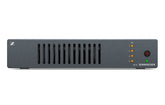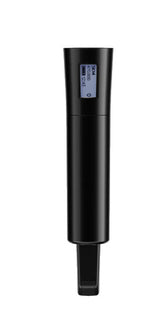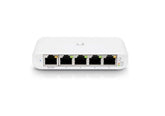How to Keep Your Smart Home Safe from Hackers
Introduction: Is Your Smart Home Actually Secure?
In 2024, over 60% of U.S. households use smart devices, from voice assistants and thermostats to surveillance systems and connected door locks. But with great convenience comes a serious risk: cybercriminals can exploit insecure devices to gain access to your home network, personal data, and even live camera feeds.
A study by Kaspersky found that 1.5 billion attacks on smart devices were recorded in just the first half of last year. As homes become smarter, they also become bigger targets.
In this guide, we’ll explain how smart home hacking works, the most common vulnerabilities, and the exact steps you can take to safeguard your home network and devices. Whether you're a tech-savvy homeowner or just starting to build a connected home, these tips will help you take control and stay protected.
What Does Smart Home Security Mean?
Smart home security involves protecting all internet-connected devices in your home from unauthorized access, data theft, or malicious activity. These devices include:
-
Smart thermostats and lighting
-
Smart TVs and media hubs
-
Smart locks and doorbells
-
Voice assistants (Alexa, Google Home)
-
Smart appliances
-
Security cameras and sensors
Each device that connects to your Wi-Fi network creates a potential entry point for hackers. Securing your smart home means building layered defenses across your network, devices, and user habits.
Benefits & Use Cases
1. Protection of Personal Data
Many smart devices collect sensitive data such as location, voice commands, video footage, and usage patterns. A breach can expose this data to bad actors.
Use Case: A homeowner secures their smart TV and voice assistant to prevent eavesdropping on private conversations.
2. Preventing Unauthorized Access
Smart locks, garage doors, and cameras are physical access points. If hacked, they can be used to enter your home.
Use Case: A family configures two-factor authentication for their smart door lock app, stopping an intrusion attempt from a compromised smartphone.
3. Avoiding Botnet Recruitment
Hacked devices can be used in large-scale cyberattacks, slowing your network and compromising your IP address.
Use Case: A smart home system blocks an incoming command from a known botnet, protecting the home network and preventing ISP throttling.
4. Peace of Mind
Knowing your devices and network are secure provides long-term peace of mind for families, especially those with children, elderly, or remote monitoring systems.
Challenges & Considerations
Device Default Settings
Many smart devices ship with default usernames, passwords, and open network settings that are easy to exploit.
Solution: Immediately change all default credentials and disable unused services or ports.
Insecure Wi-Fi Networks
If your home Wi-Fi is weak or unencrypted, all connected devices are at risk.
Solution: Use strong WPA3 or WPA2 encryption, change your network SSID, and secure your router.
Lack of Firmware Updates
Manufacturers may stop updating older devices or users may ignore available patches.
Solution: Choose brands with reliable update policies and enable auto-updates when possible.
No Centralized Control
Managing many devices from different brands and apps can make security inconsistent.
Solution: Use a central smart home hub or dashboard to streamline controls and apply standard security settings across devices.
How to Keep Your Smart Home Safe: Best Practices
Step 1: Secure Your Wi-Fi Network First
Your Wi-Fi is the foundation of your smart home. Start here:
-
Use a strong, unique password for your Wi-Fi network
-
Enable WPA3 encryption (or WPA2 at minimum)
-
Rename your SSID to something generic and unidentifiable
-
Set up a guest network for visitors and IoT devices
Explore networking solutions for fast, secure routers and access points.
Step 2: Create Device-Specific Logins and Passwords
-
Change default admin credentials for each device
-
Use strong, unique passwords with a password manager
-
Avoid reusing passwords across devices and apps
Step 3: Enable Two-Factor Authentication (2FA)
Many apps and devices support 2FA. Enable it wherever possible to add a second layer of protection.
Step 4: Keep Firmware and Apps Updated
-
Enable auto-updates for firmware and apps
-
Manually check for updates monthly if auto isn’t available
-
Remove unused apps or outdated devices from your network
Step 5: Monitor Your Network
Use your router dashboard or a network scanner to:
-
Identify all connected devices
-
Block unfamiliar or unauthorized devices
-
Set alerts for new connections
Step 6: Segment Smart Devices From Personal Devices
-
Set up VLANs or separate networks for smart home vs. laptops/phones
-
Isolate security cameras, locks, and appliances to reduce risk exposure
Step 7: Use Secure Smart Hubs and Controllers
-
Consider platforms like SmartThings, Apple HomeKit, or Hubitat for centralized, secure control
-
Avoid third-party integrations you don’t recognize or trust
Step 8: Disable Features You Don’t Use
-
Turn off voice recording logs or cloud backups you don’t need
-
Disable remote access unless it’s necessary
-
Limit microphone and camera access through device settings
FAQs
Can hackers really access smart cameras?
Yes. If the camera is connected to an insecure network or uses default passwords, it can be compromised. Always enable encryption and keep firmware updated.
What should I do if a device gets hacked?
-
Disconnect it from the network
-
Reset the device to factory settings
-
Change all associated passwords
-
Check connected accounts for unauthorized access
Should I trust all smart home brands?
Stick with well-known brands that prioritize security and offer regular updates. Avoid no-name devices that lack transparency or have poor reviews.
Conclusion: Don’t Let Convenience Compromise Security
Smart homes offer incredible convenience, but they also introduce new vulnerabilities. From voice assistants and security cameras to smart locks and lighting systems, each connected device is a doorway into your home—unless it’s secured.
By taking a proactive, layered approach to smart home security, you can keep your household protected from prying eyes, malicious bots, and potential intruders. Simple actions like updating firmware, using strong passwords, and isolating device networks can go a long way in preventing hacks.
Want to secure your smart home the right way?
Browse our lineup of home security cameras, AV systems, and networking infrastructure at SportsGeekUSA.











